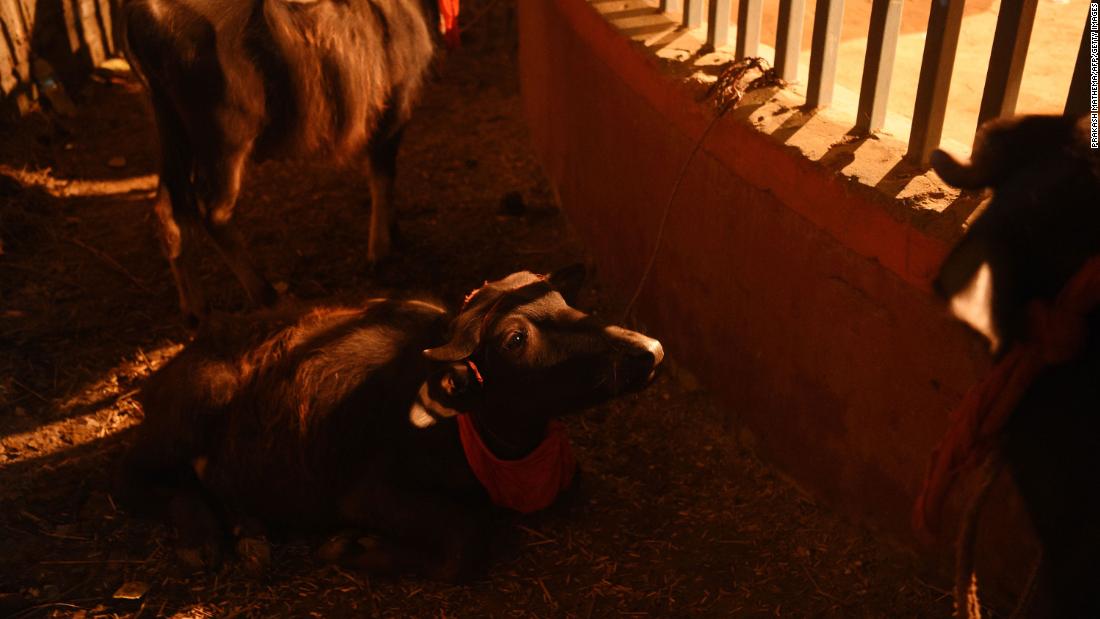Gadhimai festival: Nepal mass animal sacrifice festival begins amid outcry from rights groups

Hindu devotees look on as they travel with a goat in a vehicle ahead of the Gadhimai festival on December 2.Prakash Mathema/AFP/Getty ImagesBy Swati Gupta, CNNUpdated 0219 GMT (1019 HKT) December 4, 2019Hindu devotees look on as they travel with a goat in a vehicle ahead of the Gadhimai festival on December 2.Prakash Mathema/AFP/Getty ImagesThe Gadhimai festival, thought to be the largest mass-slaughter of animals on the planet, is underway in Nepal, despite fierce objections from animal rights groups. The Hindu religious event has been held every five years for the last 260 years in Bariyarpur, about 100 miles (160 kilometers) south of the capital Kathmandu.Hundreds of thousands of people are expected to attend the two-day event in the belief that animal sacrifices will please the goddess Gadhimai and bring them good fortune.But Manoj Gautam, an animal rights activist with Nepal’s Jane Goodall Institute, said the religious aspect seems to have been lost in recent years. “There is no compassion. There is no spirituality. It is just sport. It is wasteful,” he said.An estimated 500,000 goats, buffalo, pigeons and other animals were slaughtered in 2009, according to Humane Society International (HSI). That number dropped to about 30,000 in 2014, the NGO said. In 2015, the event’s organizers, Gadhimai Temple Trust, announced there would be no more animal sacrifices, according to CNN affiliate News18.Yet, this year’s slaughter has gone ahead regardless.In September, Nepal’s Supreme Court ordered the government to come up with a plan to phase out the animal sacrifice and pass laws making it illegal, according to a translation of the verdict published by Asia for Animals, an animal rights group.Gautam said his organization used drones to tally up the number of buffalo that had been rounded up before the slaughter. They spotted somewhere between 1,600 and 1,800, he said.It’s unclear how many other animals will be sacrificed, as they are brought to the festival by local people as offerings.





